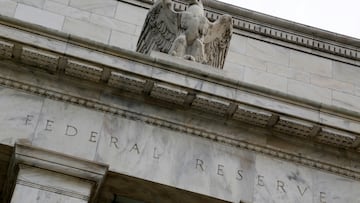Will the Fed hike interest rates again on Nov. 1? This is what experts say
The Federal Open Market Committee will host its November meeting on Wednesday. Here’s what the experts are saying about prospects of a rate hike.

The Federal Reserve has aggressively raised its benchmark lending rate since March 2022, going from near zero to the range of 5.25% to 5.50%. The rapid tightening of monetary policy is intended to bring inflation back to the US central bank’s target after peaking last summer at a four-decade high.
When the Federal Open Market Committee (FOMC) wrap up their November meeting on Wednesday, it’s expected that Chair Jerome Powell will announce that interest rates will remain steady once again.
Interest rate hikes take about a year to be felt across the whole of the economy, so experts are forecasting that the US central bankers believe rates are at an acceptable rate to bring down inflation.
This is what the experts think on a rate hike
Hours before the FOMC is set to announce its decision on raising interest rates or pausing for the second time this year, financial markets are nearly unanimous in their expectation that the Federal Reserve will hold its benchmark lending rate steady this month. Based on data from the CME FedWatch tool, 97.4% of interest rate traders are betting on a pause at November’s meeting.
“On November, we think that further labor market rebalancing, better news on inflation, and the likely upcoming Q4 growth pothole will convince more participants that the FOMC (Federal Open Market Committee) can forgo a final hike this year, as we think it ultimately will,” Goldman Sachs strategists wrote in a report in September.
Where will inflation be next year?
There are still some uncertainties that could throw a wrench in the Fed’s efforts to bring inflation down to its 2% target. Energy prices are rising again as OPEC has been cutting production. However, the Fed is more focused on core inflation, which strips out volatile energy and food prices. For September 2023, core inflation came in at a 3.7% annual rate.
Researchers at the Federal Reserve in Chicago argued in a recent paper that the data shows “the effects of the past tightening on inflation have almost run their course.”
They predict that “the current monetary policy stance as well as other forces in the economy, indicates that inflation will return to near the Fed’s target by mid-2024.”





